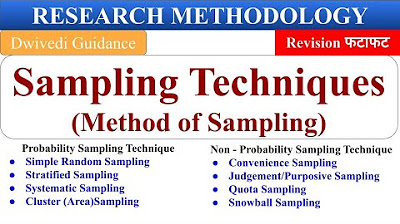SAMPLING TECHNIQUES | STATISTICS | (3rd) THIRD QUARTER GRADE 7 MATATAG TAGALOG MATH TUTORIAL
Summary
TLDRIn this educational video, the instructor introduces various sampling techniques used in statistics, including random, systematic, stratified, cluster, and convenience sampling. The video starts by explaining the differences between population and sample, using relatable examples like tasting a slice of pizza to understand the whole. The instructor walks through each sampling technique, provides real-life examples, and discusses the advantages and disadvantages of each. By the end of the video, viewers are encouraged to practice applying these concepts in various scenarios. The instructor also emphasizes the importance of sampling for practical and efficient data collection.
Takeaways
- 😀 The population refers to the entire group you want to study, while a sample is a smaller group selected to represent the population.
- 😀 Sampling is essential for studying large populations, as it saves time, reduces costs, and makes data collection more practical.
- 😀 Simple random sampling ensures every member of the population has an equal chance of being selected, eliminating bias.
- 😀 Systematic sampling follows a specific order (e.g., every nth item), making it easier to implement for large populations.
- 😀 Stratified sampling divides the population into subgroups (strata) and samples from each subgroup, ensuring diversity in the sample.
- 😀 Cluster sampling involves dividing the population into clusters and selecting entire clusters at random, which is useful for geographically spread populations.
- 😀 Convenience sampling selects members of the population who are easiest to reach, but it may introduce bias and inaccurate data.
- 😀 Random sampling minimizes bias and ensures fair representation, making it a reliable method for data collection.
- 😀 Sampling techniques should be chosen based on the study’s goals, the population's characteristics, and practical considerations like time and cost.
- 😀 Stratified sampling is particularly useful when there are significant differences between subgroups in the population that need to be represented.
- 😀 In convenience sampling, the sample is selected based on accessibility, often from a small or easily available group, which can lead to less representative results.
Q & A
What is the main objective of the video?
-The main objective of the video is to explain various sampling techniques, such as random, systematic, stratified, cluster, and convenience sampling, and help viewers understand how to differentiate between a population and a sample.
What is the difference between a population and a sample?
-A population refers to the entire group that is being studied, while a sample is a smaller group selected from the population to represent it. For example, all students in a school make up the population, and 30 randomly selected students form the sample.
Why is sampling important in statistics?
-Sampling is important because studying an entire population can be impractical due to factors like cost, time, and accessibility. Sampling allows researchers to make conclusions about a population by studying only a representative portion of it.
How does simple random sampling work?
-In simple random sampling, every individual in the population has an equal chance of being selected. For example, a teacher randomly picks 5 students from a list of 40 to survey their favorite subjects.
What is the main advantage of simple random sampling?
-The main advantage of simple random sampling is that it reduces bias, ensuring a fair representation of the population, since every individual has an equal chance of being selected.
How does systematic sampling differ from simple random sampling?
-Systematic sampling follows a specific order and selects every nth individual in the population, whereas simple random sampling selects individuals at random without any order or interval.
What is stratified sampling and when is it useful?
-Stratified sampling involves dividing the population into subgroups (strata) based on characteristics such as age or grade level, and then randomly selecting samples from each subgroup. It is useful when there are distinct subgroups in a population that need to be represented in the sample.
Can you explain cluster sampling with an example?
-Cluster sampling divides the population into clusters or groups, and entire clusters are randomly selected for study. For example, in a district with 30 schools, a researcher might randomly select 5 schools, and then survey all students within those schools.
What is convenience sampling and why is it considered biased?
-Convenience sampling involves selecting individuals who are easiest to reach, such as the first people the researcher encounters. While it is quick and simple, it is biased because it may not represent the entire population accurately.
Why is sampling considered more practical than surveying an entire population?
-Sampling is more practical because it saves time and resources. Conducting a survey of an entire population can be expensive and time-consuming, especially when the population is large, like in national surveys or when data is geographically dispersed.
Outlines

This section is available to paid users only. Please upgrade to access this part.
Upgrade NowMindmap

This section is available to paid users only. Please upgrade to access this part.
Upgrade NowKeywords

This section is available to paid users only. Please upgrade to access this part.
Upgrade NowHighlights

This section is available to paid users only. Please upgrade to access this part.
Upgrade NowTranscripts

This section is available to paid users only. Please upgrade to access this part.
Upgrade NowBrowse More Related Video

sampling techniques, types of sampling, probability & non probability sampling, Research methodology

Sampling Techniques

Kuliah Statistika Industri | Teknik Sampling

What Are The Types Of Sampling Techniques In Statistics - Random, Stratified, Cluster, Systematic

KULIAH METODE PENELITIAN (5) - POPULASI DAN TEKNIK SAMPLING

Estatística - Aula 13 - Amostragem Conceitos Fundamentais
5.0 / 5 (0 votes)